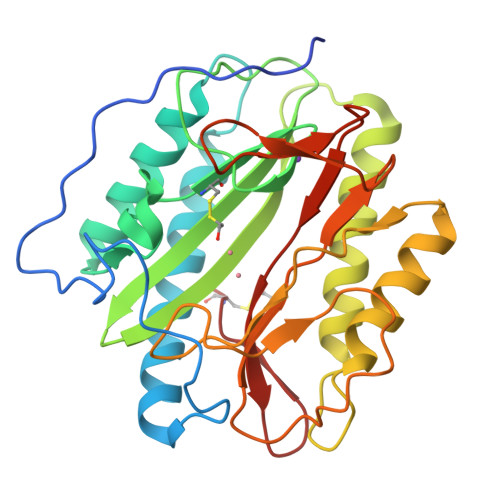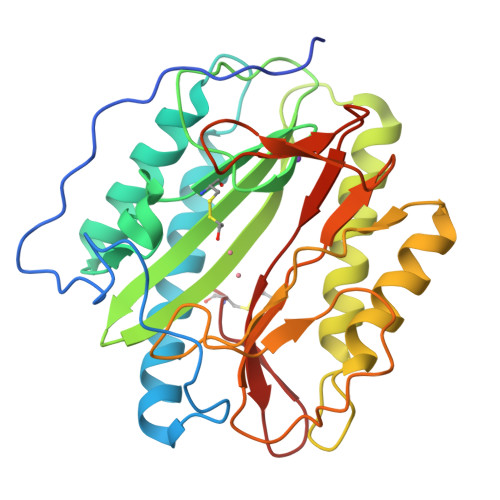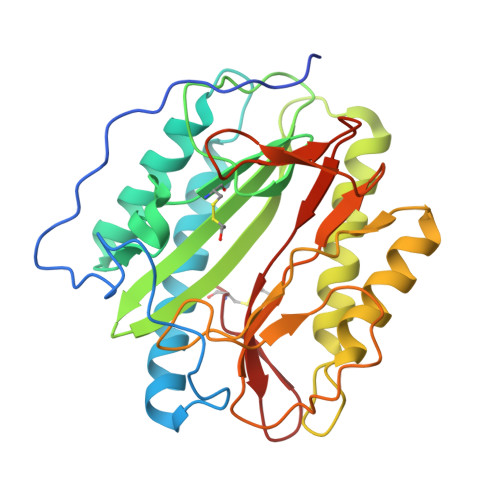Selective targeting of the conserved active site cysteine of Mycobacterium tuberculosis methionine aminopeptidase with electrophilic reagents
Reddi, R., Arya, T., Kishor, C., Gumpena, R., Ganji, R.J., Bhukya, S., Addlagatta, A.(2014) FEBS J 281: 4240-4248
- PubMed: 24841365
- DOI: https://doi.org/10.1111/febs.12847
- Primary Citation of Related Structures:
4IDY, 4IEC, 4IF7, 4OOK - PubMed Abstract:
Methionine aminopeptidases (MetAPs) cleave initiator methionine from ~ 70% of the newly synthesized proteins in every living cell, and specific inhibition or knockdown of this function is detrimental. MetAPs are metalloenzymes, and are broadly classified into two subtypes, type I and type II. Bacteria contain only type I MetAPs, and the active site of these enzymes contains a conserved cysteine. By contrast, in type II enzymes the analogous position is occupied by a conserved glycine. Here, we report the reactivity of the active site cysteine in a type I MetAP, MetAP1c, of Mycobacterium tuberculosis (MtMetAP1c) towards highly selective cysteine-specific reagents. The authenticity of selective modification of Cys105 of MtMetAP1c was established by using site-directed mutagenesis and crystal structure determination of covalent and noncovalent complexes. On the basis of these observations, we propose that metal ions in the active site assist in the covalent modification of Cys105 by orienting the reagents appropriately for a successful reaction. These studies establish, for the first time, that the conserved cysteine of type I MetAPs can be targeted for selective inhibition, and we believe that this chemistry can be exploited for further drug discovery efforts regarding microbial MetAPs.
Organizational Affiliation:
Center for Chemical Biology, CSIR-Indian Institute of Chemical Technology, Hyderabad, Telengana, India.





















